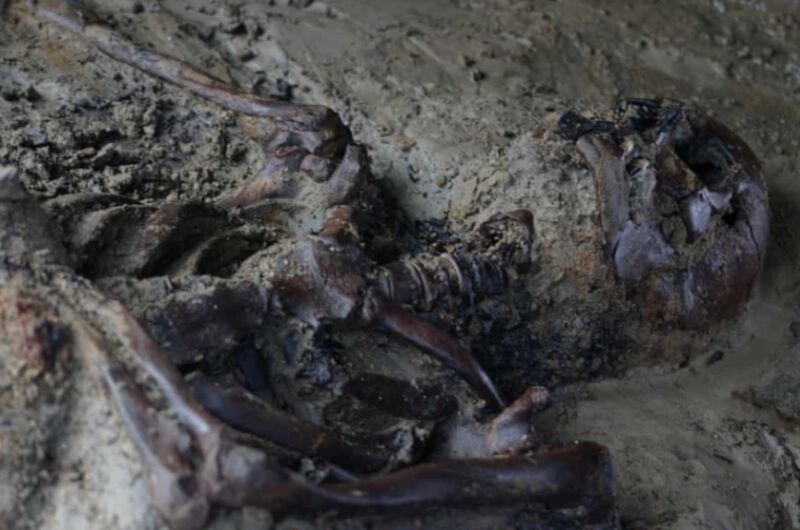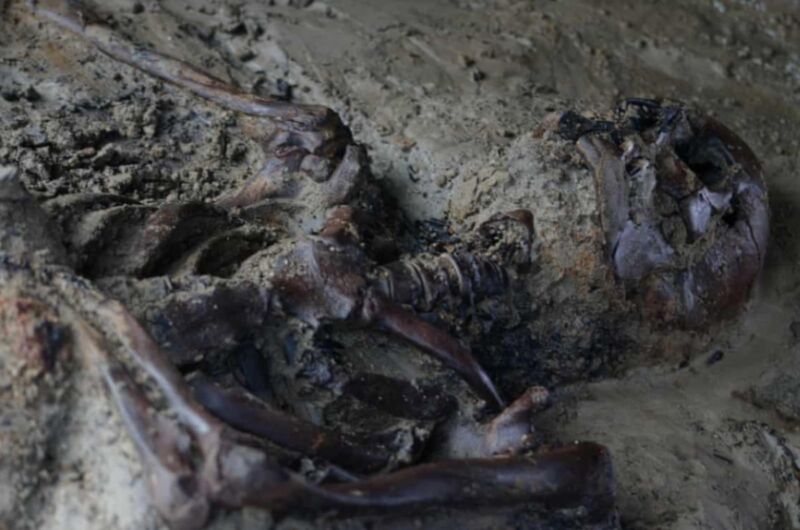
Enlarge / The partially mutilated remains of a Vesuvius victim, found at the site of what would have been the beach of Herculaneum. (credit: Domenico Camardo/Herculaneum Project)
Archaeologists have announced the “sensational” discovery of the partially mutilated skeletal remains of a middle-aged man who perished on the beach at Herculaneum during the eruption of Mount Vesuvius in 79 CE. It’s the first excavation of the site in nearly three decades, and Herculaneum Archaeological Park Director Francesco Sirano expects to find even more victims’ remains as the excavations continue.
Eagle-eyed excavators spotted a couple of leg bones sticking out of the edge of an escarpment; a prior excavation had chopped the skeleton off at the feet. Experts estimate that the man was between 40-45 years old. The remains were found lying with the head pointing back in the direction of the sea and surrounded by carbonized wood, including a roof beam that could have crushed the man’s skull. The victim’s bones were a reddish color, which Sirano identified as stains left by the man’s blood.
“We can learn many things from his bones: his exact age, what jobs he may have done, whether he had any illnesses,” Domenico Camardo told reporters. Camardo is chief archaeologist of the Herculaneum Conservation Project.





